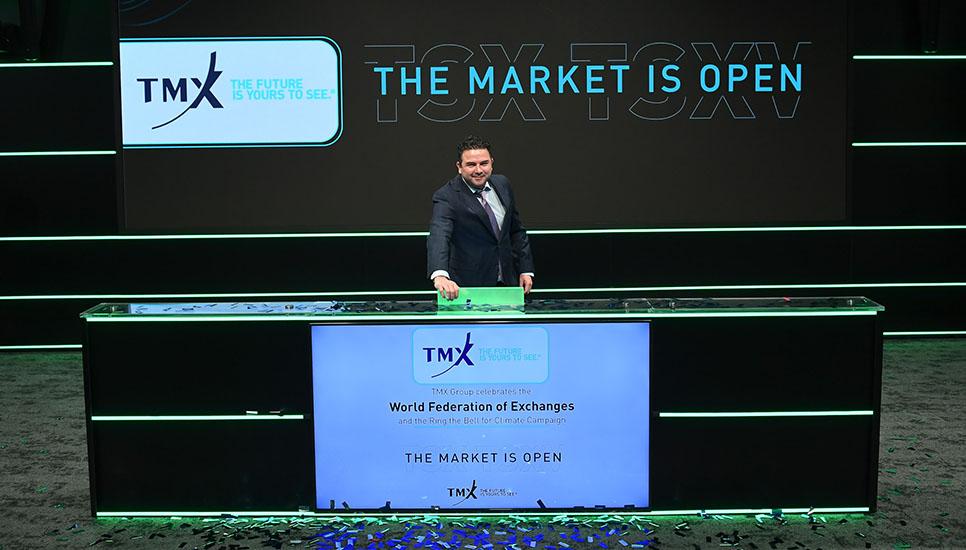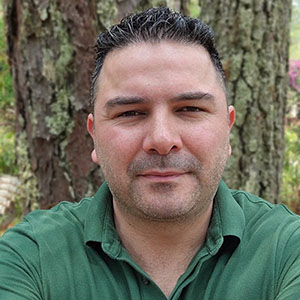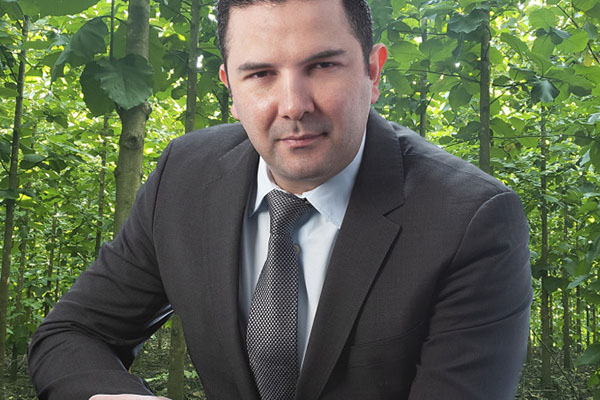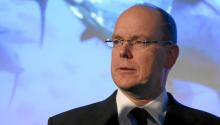Carbon credits: ‘A call to action to families’

As CEO and principal of Ecoforests Asset Management, Michael Ackerman’s expertise in the sustainable investment space is extensive and expansive.
While the Ackerman family’s interests expand to private equity, real estate, agriculture and more, under the second-gen’s leadership, the Toronto-based family firm has grown to oversee environmental and social projects in Costa Rica, Honduras and Panama, with more than 5,000 hectares under management in sustainable forestry and circa 10,000 hectares on carbon capture/removal projects across Central America.
Since 2023, Ackerman has served as a council member on the Green and Transition Council for the Canadian Chamber of Commerce, a role that advocates for harmonised sustainability reporting standards, the encouragement of acceleration of private investment in decarbonisation, and the translation of relevant corporate objectives into public policy recommendations.
Having spent nearly two decades at the forefront of an industry that has witnessed seismic changes, Ackerman has become a staunch advocate for the benefits of carbon capture. Here, he discusses the benefits and essentials of carbon credits and reveals why now is the time for families to take positive action for lasting sustainable change…

What are carbon credits and how do they work?
Carbon credits are a way of removing carbon emissions from the atmosphere. They’re obtained by making investments or developing activities in, for instance, renewable energy. If you move from fossil fuels to renewable energy, then you are negating the emissions created by burning fossil fuels and, thus, you can be provided with a carbon credit for energy efficiency.
You can also produce carbon credits by capturing carbon, for example via nature-based solutions (NBS) with afforestation avoidance removal and blue carbon, which is based on removing carbon via, for example, algae in the ocean.
In recent years, there has been the development of direct air carbon (‘DAC’) and carbon capture storage (‘CCS’), both of which are new tech forums that companies such as Amazon have begun investing in. As a result, there has been an influx of investment on those technologies, much more than the conventional natural ones.
The space I am involved with is around forestry. We breathe oxygen and we exhale carbon dioxide and plants and trees absorb CO2 and exhale oxygen. Through nature-based solutions, plants or trees more effectively absorb CO2 from the atmosphere and thus create high-quality carbon credits.
Some of the biggest corporate players – including Google, Microsoft, Shell and Amazon – have made public their sustainability pledges. How should family businesses follow suit?
Families of wealth should, in my opinion, address the elephant in the room, which is global warming. We’ve just matched the record for the 12 hottest months of all time and we will likely see that trend continue to rise if the situation isn’t addressed. To do their part, family-run operating business need to have structured environmental, social, and corporate governance (‘ESG’) and net zero goals. They should look at what level efficiencies have been reached and they should look at where they are investing. I recognise that it’s sometimes hard to take drastic action and make change but what we’re living through now has never been lived through before and the inaction of some families, institutions and corporates is not helping.

There have been scandals in the Press around worthless carbon offsetting. You’ve said that family businesses’ commitment to sustainable change is a necessity, but how do families ensure they’re doing the right thing
If you look back at the height of the social media frenzy or the early days of Bitcoin, disruptive markets always start out like the Wild West. But then, after a time, it begins to normalise. This is how it also was with carbon credits just a few years ago, but now it’s much more regulated.
I think the best way for families to ensure they’re doing the right thing is to work with international organisations like, for instance, Gold Standard and Verra’s Verified Carbon Standard (‘VCS’) Program, which are the two most recognised certifying bodies for carbon credits, and which also use a chain of custody certifications and not-for-profit oversight.
There has been some negative commentary, which was mainly based on one particular type of credit within the forestry industry, REDD+ (‘reducing emissions from deforestation and forest degradation in developing countries’. The ‘+’ stands for additional forest-related activities that protect the climate, namely sustainable management of forests and the conservation and enhancement of forest carbon stocks). REDD+ is an avoidance credit, which applies to natural forests that are already in existence and where there is not much of an investment required other than managing and assuring that the forest remains intact and is not deforested. This space has created the most negative commentary because it’s easy to purchase an existing forest and then claim the credit on that standing forest. For that reason, there has been a shift in interest into other forms of forestry, notably ARR (‘afforestation, reforestation and restoration’), which aims to store carbon by increasing biomass and associated carbon pools within a project area, usually through tree planting.

In the nature-based solutions space, there is a claim for high-quality credits, can you describe exactly what a high quality credit is?
To take the example of an NBS / ARR project, basically, I could plant a tree in the Colombian savanna and that tree will absorb carbon. That removal earns a carbon credit, but it’s not a high-quality carbon credit. Now, if I plant a tree in, for instance, the project that we’re doing in Honduras (which is next to a national park that delivers water to the capital city of Tegucigalpa), it’s also a watershed conservation because that tree is helping to protect a water source. That adds to the quality of the credit.
Our company is constantly evolving now, as are a lot of carbon credited project developers. Let’s say we have a mandate of investing 3% to 5% of our CapEx (‘capital expenditure’) into the communities where we are developing projects. All these elements - watershed conservation, employment creation, biodiversity improvement, social responsibility etc - are called co-benefits, which, when combined, increase the overall quality of the carbon credit.
But how do you know that we’re producing high-quality carbon credits? The Climate, Community and Biodiversity (‘CCB’) standards certification is a clear indicator. How does it work? Basically, if I’m building a school, for example, then I have to begin tracking from before the school is even built… How many people are there in the community? How many children in that community attend class? Then, after the school is built, we have to continue tracking all the processes in the community development and growth throughout the lifetime of the project. That level of tracking is a requirement for CCB.
Obviously, this level of high-quality credit is harder to obtain but it makes sense from both an ESG and financial perspective when you consider that the average carbon credit is worth, say, $5 and a high-quality one, by contrast, is worth $30. It should not be a case of, ‘Let’s make the most credits and sell them at the highest price and make a quick buck’. It’s a process that takes time but comes with the added benefit of helping the environment, communities and biodiversity, while having a lucrative business at the same time.

What is your call-to-action message for families?
We all live on the same planet, and regardless of any world event that affects our judgement for decision making, the greatest existential threat we have today is climate change.
There is no reason to expand and preserve wealth if we don’t put our planet first. If you are not sure how to invest or finance the carbon capture space, families under their operating business can also opt to offtake agreements that will see them obtain credits at a discount and secure the credits needed for their business in coming years.
By doing so, they allow project developers to unlock readily available capital. This capital only unlocks when buyers for this credits have agreed to offtake the credit production. So if you are not ready to invest today, then at least consider securing your credit requirements for the upcoming future without any upfront financial commitment.

According to Campden Wealth’s North America Family Office Report 2023, responsible investing is becoming increasingly linked with impact investing. Impact investors will invest in an enterprise on the basis that it will produce a positive social or environmental change. With that in mind, should investors be prepared to accept a lower financial return than would normally be the case?
I would say it’s not so much about the lower return, rather than the long-term involvement. I’m quite surprised to see companies like Amazon, Amazon, Goldman Sachs and Microsoft have invested in non-nature-based solutions, such as carbon removals in the tech space. The tech world is one of the wealthiest industries and they tend to look for a faster return.
Nature-based solution projects tend to have a return of about 30% over a long-term 40-year investment timeframe. It’s not about the return, although the project will start generating income in three or four years from the moment it starts. This approach is a long-term commitment that should be made specifically for compensating all the emissions that the family’s operating business is already generating.
Nature-based solutions are actions to protect, sustainably manage and restore natural and modified ecosystems that address societal challenges effectively and adaptively, simultaneously benefiting people and nature. They are estimated to provide 37% of the mitigation needed until 2030 to achieve the targets of the Paris Climate Agreement, and can help financial institutions mitigate risks arising from nature loss and climate change.
Although biodiversity loss and ecosystem collapse have been rated by the World Economic Forum as one of the top five risks over the next ten years, a financing gap estimated at US$700 billion per year to address these issues still persists. According to UNEP’s State of Finance for Nature Report, only 17% of total investments in NBS are currently from private finance. These should be increased by private capitals, bringing the total investments from the current level of US $154 billion a year to the US $384 billion a year required by 2025.






